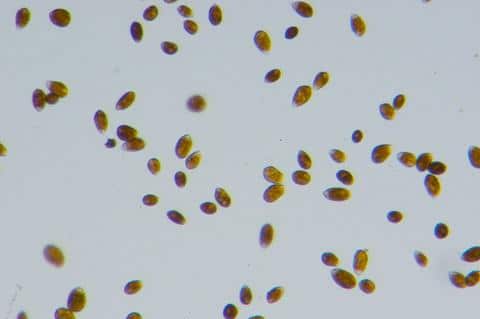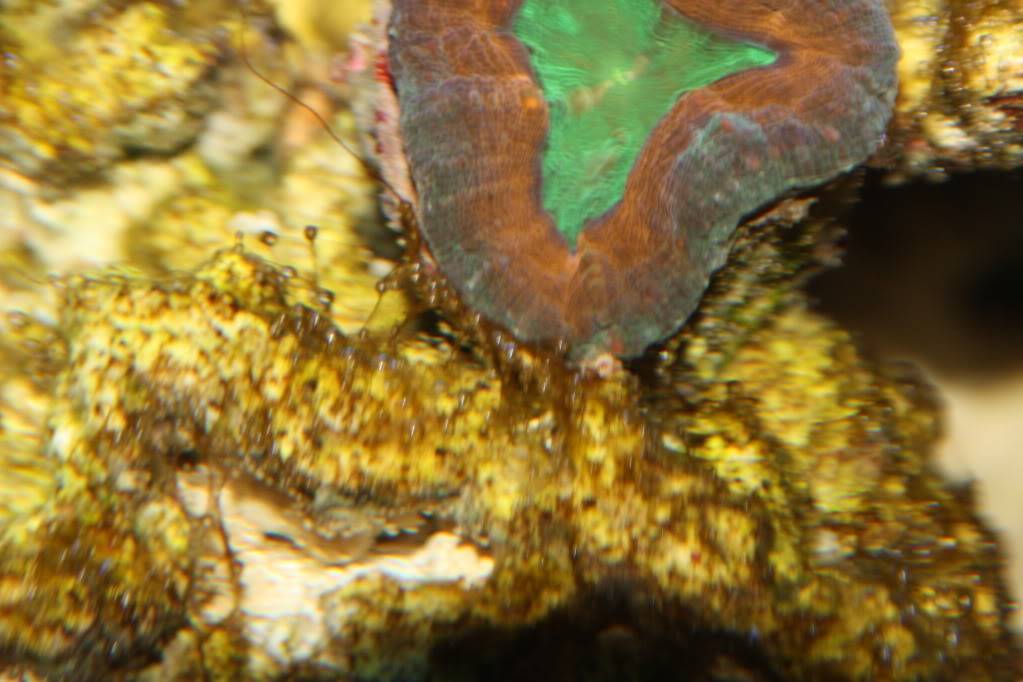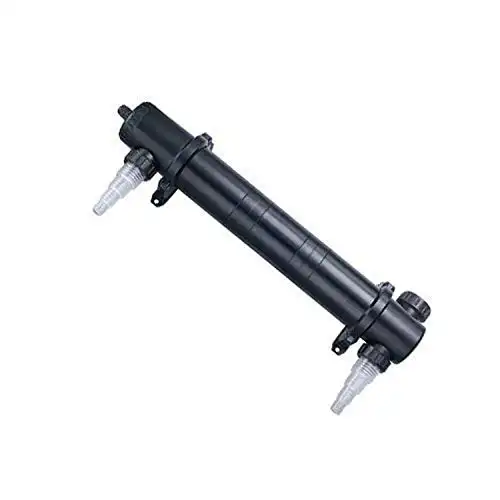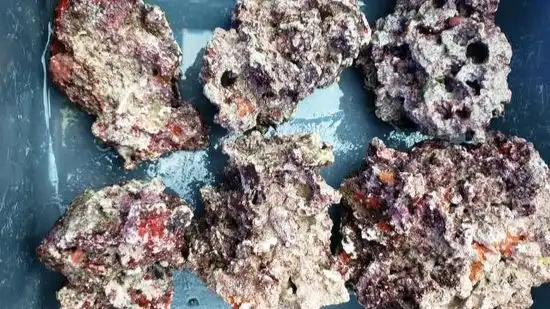Thank you for visiting! By the way… any links on this page that lead to products on Amazon and other stores/partners are affiliate links Aquarium Store Depot earns a commission if you make a purchase.
Dinoflagellates are a nightmare to deal with in the saltwater aquarium hobby. It looks ugly, kills most of your inverts, and chokes out your corals. Prior to writing this article, I looked around the web and YouTube and was amazed at the lack of information on this tank pest. In this post, I’ll provide you with the ultimate tips on how to get rid of dinoflagellates for good. Let’s get started!
Key Takeaways
- Dinos are caused by a combination of a lack of biodiversity and lack of nutrients in a saltwater aquarium
- Dinoflagellates can light without nutrients and off lighting. Sunlight and lighting will make things worse
- There are several ways to get rid of Dinos, but the most tried and true is adding biodiversity and dosing nitrates and phosphates to maintain minimal levels for other algae to grow
What Are Dinoflagellates?
In the Wild
Dinoflagellates are protists, an organism that can function as a plant and an animal at the same time. Some dinoflagellates eat other protozoa; some generate energy through photosynthesis; some can do both. In the wild, there are about 1,700 different kinds of marine dinoflagellates and 200 freshwater kinds. They are important part of the food chain, providing nourishment for other sea creatures. In a natural environment, they’re a crucial member of the ecosystem.
In Your Tank
Unfortunately, dinoflagellates quickly become a nuisance in an aquarium environment.
Dinoflagellates quickly overrun the surface in your aquarium because there is no specific ecosystem for them to survive. Depending on the conditions, dinoflagellates can multiply up to a million cells in one milliliter of water in just a short period of time. The bigger the population, a higher chance that it will make the water toxic and can kill other life form inside your tank. So, it’s important to control dinoflagellate population as early as possible before it occupies every space inside your aquarium.
What Should I Look For?
It’s not like you’re going to go to the store and buy some dinos to dump into your tank; these pests are introduced to your tank accidentally. Your tank can get this from food, corals, rocks, and other aquatic plants. Dinos are very resilient because it can live without eating anything for a long time unlike any other life forms like algae.
Nutrients are present in your tank which gives energy to fishes and plants. Even if your tank lacks nutrients, dinos can still survive. It is possible for your tank to have dinos if the nitrates and phosphates level in your aquarium are close to zero. It is important to regularly check your tank before it becomes too late.
Identifying What Dinoflagellate You’re Dealing With
The best way to approach your dino problem is to first figure out what kind of dino has moved into your aquarium.
The most common dinoflagellate (or “dino” for short) to see in an aquarium is a slimy, stringy brown variety, commonly known as Brown Slime Algae. Most aquarium enthusiasts have dubbed it “the brown menace.” They’re not all brown, though. They also come in white, yellow, and various shades of green.
In more technical terms, there are four main dinoflagellates you’ll see in your aquarium1:
Ostreopsis

Prorocentrum

Amphidinium

Coolia

Some of the things all of these guys have in common is that they:
- Are mucous-like (sometimes described as runny boogers)
- Produce air bubbles
- Trap air bubbles between the slime and the glass of the tank
- Spread quickly, covering all surfaces with coral being a particular favorite
Here’s an easy test you can do to determine if you have algae or dinos:
- Scoop some sludge and water out of your tank.
- Put the sludgy water in a clear container with a lid.
- Shake the container to break up all of the floating bits.
- Filter the water either through paper towel or a filter sock into a second clear container.
- Leave the second container of filtered water in a sunny location.
- Monitor the water for changes, namely the reappearance of mucous-like strands.
Eventually, dinoflagellates will regroup after they’ve been filtered. Algae will remain separated. So, if the strands of goo show up, you know you have dinos!
How Do I Get Them Under Control?
Dinos aren’t necessarily a bad thing. When there aren’t too many of them, they’re part of the ecosystem. But if you provide an ultra low nutrient tank with no biodiversity, they’ll make themselves known quickly. The best way to tackle them varies on how bad your case is.
Dinos are a very resilient pest to control in the aquarium. You will never get rid of them completely since they are part of the ecosystem, but you have to control them with a multi-prong approach in order to keep them for showing themselves in your tank.
Manual Removal
The first step is removal. Others might think that they need to remove all the water and change it with a new one, but that is definitely wrong. Along the process of removing dinos, changing the water in your tank will make things worse. Dinos thrive in nutrient straved tanks and cleaning water will eliminate nutrients and allow Dinos to thrive further. It advisable that you remove the dinos manually with the use of filter sock instead of changing water.
You will need a very fine filter sock to do this (Quick Note – this post contains affiliate links. An affiliate link means I may earn advertising or referral fees if you make a purchase through my link). A 10 micron filter sock is fine enough to catch dinos in the water column.
Increasing Nitrates and Phosphates
- Another way to get rid of dinos is by increasing the amount of nutrients in your tank. You should increase nitrates and phosphates to observable level. You may consider nitrates with NeoNiitro and NeoPhos from Brightwell Aquatics. Even a freshwater solution like SeaChem Flourish will work as well.
Remove Nutrient Reducing Media
You also need to remove nutrient reducing media like GFO. It is common for many tanks to have dino outbreak because of the presence of GFO. When you get rid of GFO’s, it is easier for you to increase the nutrient level in your tank and maintain it in the long run. Stop doing any type of nutrient decreasing dino. Examples are No-Pox and Vodka dosing.
Protect Your Invertebrates and Fish!
Along the process of dealing with dinos, having carbon present in your tank will help neutralize the toxins they release as they die off. This will protect your livestock.
Adjust pH
Adjust the pH of your tank. A pH of +8.4 is a good level for reef tanks to avoid dino blooms. The pH is something you can play with over time to determine what works best for your tank.
Kill The Lights
Control the lighting in your tank because the most common dinos derive their energy from photosynthesis, so killing the lights will also kill them. You can use a blackout curtain or cardboard with duct tape around the tank and on top of the tank. Blackouts should last at least 72 hours. Blackouts will usually not result in an eradication of dinos, but will qwell them done to the point where you can start utilizing other methods.
Use Hydrogen Peroxide
Add small doses of hydrogen peroxide to your tank. The general rule is 1 ml per 10 gallons of water. Regular 3% hydrogen peroxide is used.
Use A UV Sterilizer
Use a UV Sterilizer. Get a high quality and well sized UV Sterilizer and run it 24-7. The UV sterilizer will be most effective during the blackout period. This method works best when dealing with Ostreopsis. You can use a Jabeo UV as a cheap solution or an Aqua UV for a high-end solution.
The Jebao is a budget friendly UV sterilizer that is effective at eliminating Ostreopsis
The Nuclear Option – Use Dino X
Fauna Marin has developed a product called Dino X that is made to eliminate dinoflagellates in a reef tank. It is a very harsh treatment and should only be considered after all these methods are attempted and you increase biodiversity (see below on that). Fauna Marin requests that you not use carbon during the treatment program, which makes this risky to use since dinos will release toxins when they start to die. Remove as much as possible before attempting. Fauna Marin also recommends using a protein skimmer during the treatment option, so those with nano reef tanks or skimmerless setups may not be able to use this product.
Fauna Marin's Dino X is the only solution designed to work against Dinos that is readily available
How Can I Prevent Them in the First Place?
Biodiversity is a major reason why new tanks get dinos when they hit low nutrient conditions. A biodiverse tank has multiple organisms that compete with dinos and keep them from thriving. When choosing the type of rock you are going to use, keep biodiversity in mind. You can choose between live rock and complete dry rock or a hybrid, but I would caution against going with a 100% dry rock and dry sand start.
Dry rock is devoid of biodiversity while in a live rock tank you don’t usually see dinos. It is hard for them to multiply because there too many competitors even in a low nutrient environment.
The problem will be the availability of the live rock because it is quite hard to find nowadays and is expensive to boot.
These days – Real Reef Live Rock is the best source for aquacultured live rock that has the right balance of biodiversity while still being free of pests. This is the best option for those who who not use a sand bed and going bare bottom yet want to free of the risk of pests.
This is the best aquacultured rock you can find in stores and online
You can obtain Live Rock from Florida that is Maricultured. If you are starting up a new tank and can cure, this is an excellent option. It is shipped directly to your door. The base is Oolite Limestone rock that has been left in the ocean for several years undisturbed. The foundation of live rock’s biodiversity is a key factor in preventing dino outbreaks. You will run the risk of a having a pest hitchhiker, but honestly in my experience these pests are less of a pain to deal with then dinos.
An old school solution. Once cured, Dinos tend not to be an issue because of the great biodiversity contained in this rock.
For those people who are not able to procure live rock or have a sand bed, the other option would be to introduce microfauna and bacteria through an aquaculture facility like Indo Pacific Sea Farms. They have been around for many years and their live sand activator and wondermud are just the ticket for increasing biodiversity.
Remove Overabundant Food Sources (AKA Your Invertebrates if an outbreak occurs)
Snails encourage dinoflagellates to settle in and make your tank their home. Well, they don’t actually do it when they’re alive: a dead snail is a feast for a population of dinoflagellate. Dinos will wreck havoc on an invert population. Anything that attempts to eat it can be poisoned to death and the toxins they release will kill most inverts including microfauna like pods! Make sure you’re removing any dead snails, fish, and corals from the tank.
Because it’s hard to tell if your snails are alive, the most foolproof way to prevent that is by removing the snails altogether. Once your dino problem is under control, they can be returned to the tank.
Balance Tank Nutrients
A couple of specific nutrient-related things you can monitor and manage in your tank are:
- Magnesium: levels should be somewhere in the 1400-1600ppm range
- pH levels (as mentioned above)
- Bacteria: introducing new bacteria to your tank will deprive dinos of nutrients. Live Rock and Live Sand are your best friends to maintain biodiversity!!!
- Nitrates – Work on getting these above 0 and maintaining it. A little bit of nitrates is good for your tank
- Phosphates – Don’t let your phosphates hit 0
Don’t Create an Undernourished Environment
A tank that is starved for nutrition can cause a dino population to pop up too. Usually this situation comes about when you make some major change to the landscape or population of your tank, and the food shortage is abrupt. Dinos don’t actually need that much physical food to eat, especially since most are also photosynthetic. So, if other bacteria or phytoplankton in your tank die out from lack of nutrients, it removes the dinoflagellate’s primary competition and gives them room to thrive.
Wrapping Up
Quality equipment planning and setup is important for the overall health of your tank, whether it’s a 10 gallon aquarium or a 100-gallon aquarium. While there are several factors that help dinoflagellates take over, a poor setup and controlling parameters tops the list.
When dying, dinoflagellates release toxins into your water. So, it’s essential to purify the water consistently, both during and after your dinoflagellate infestation.
Here Is a Wrap Up To Close Down This Post:
Biodiversity Is Your Friend!
Don’t be scared to get live rock or add live sand activators in your tank
Having Nitrates and Phosphates Is Good!
Having Nitrates and Phosphates is good – our hobby has spent years demonizing this. This has lead to tank setups way overbuilt from the start and completely sterile start systems. This extreme approach has lead to more and more dino cases over time!
Dinos Require a Multi-Prong Approach
Dinos are tough to deal with. Use the recommended techniques mentioned in this post to fight them off and understand this is a intense battle.
Test Your Water Parameters!
Regularly test your water’s nutrients – nitrates & phosphate and understand the nutrient consumption on your tank. Modern reefs these days can strip nutrients completely clean and may require dosing of nitrates and phosphates to stay at a healthy level. Knowing your consumption puts you in control of your reef tank! Use a reliable quality test kit to monitor your levels and get in the habit of testing regulary.
However you choose to combat your dinoflagellates, know you’re not alone. Just about every modern aquarium enthusiast has done battle with the brown menace. There is hope: you just need to be consistent and patient in your approach killing them off.
- About the Author
- Latest Posts
I’m thrilled that you found Aquarium Store Depot! Here you’ll find information on fish, aquariums, and all things aquatics related. I’m a hobbyist (being doing this since I was 11) and here to help other hobbyists thrive with their aquariums! I adhere to a high quality Editorial Process and Review products with real life field usage and practical analysis.










Raise your temperature to 83 and keep it there for a week or 2. This will work!
Thanks for the tip Yazreef. Just saw it mentioned on Bay Area Reefers. I’ll add it to my content.
Yes, I am interested in hearing more. How did you keep the salinity up?
Have dinos changed in the last couple of years. 28 years into the hobby and I cannot get rid of dinos after over a year. I tried all the regiments I could read. I also tried all the bacterias, UV sterilizer, hydrogen peroxide, bubble scrubbing, Dino X, phytoplankton, Vibrant, ICP test, Dr Tim’s regiment, 3 day black outs. And of course raise nitrates and phosphates and probably other more crazy ideas. Why are they so resilient? what are they thriving off of? I’m about done. If anybody has tried anything different than above that’s worked please email me. Thanks
Hi Chris,
Dinos are a major issue not in today’s modern reefs. It’s because the systems now run so clean devoid of any nutrients which makes Dinos thrive. With most reefers these days doing dry/sterile rock starts versus live rock, you have a lot of issues with lack of biodiversity in your tank and bone dry nutrients. Modern skimmers and media also contribute to the problem and they pull our nutrients more efficiently than ever before.
It’s a good and bad problem to have. I’m still a fan of live rock for this very reason – Dino suck and most dino outbreaks are usually a result of dry rock starts.
The Hydrogen peroxide is 3%? Every day?
I would like to comment on this article about dino’s. I had them for about a year or so in my reefer 250 and in my 29 biocube. I tried EVERYTHING you have listed here in this article. All of these suggested removal approaches only seemed to knock them back a bit. None of them and I repeat NONE of them worked to get rid of the dino’s. They are the most stubborn and hardy creatures I have ever dealt with to the point of almost giving up!
I finally started to make headway by keeping my PH up to at least 8.4 to 8.6. Additionally I thought I would try a new approach by using only DI water(I’m sure RO would work the same). It is a known fact that saltwater organisms do not live in pure water and many reefers use this method as a water bath or dip to get rid of unwanted critters on their new coral, live rock or whatever. I used this approach by using an airline as a siphon tube and a small bucket of DI water held at least to head high(sometimes I just placed the bucket on my head cause I got tired LOL!). Slowly siphoning the water directly on the sand bed where they mostly seem to hang out. I did this everyday for a couple of weeks and then every other day for another couple of weeks and now I’m down to twice a week with no dino’s in sight, however, I am still doing this and will be for a while (another month) just to be sure they are GONE! I really hope that someone can use what I have suggested here and get the same or better results. Happy Reefing, AB.
How do you keep the salt up?
I would love to pick your brain further
Yes, I am interested in hearing more. How did you keep the salinity up?